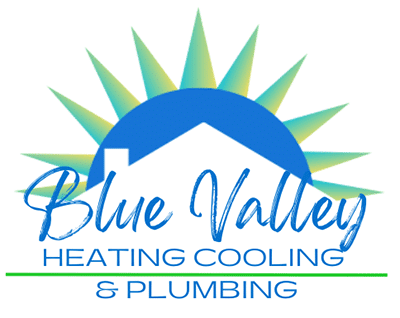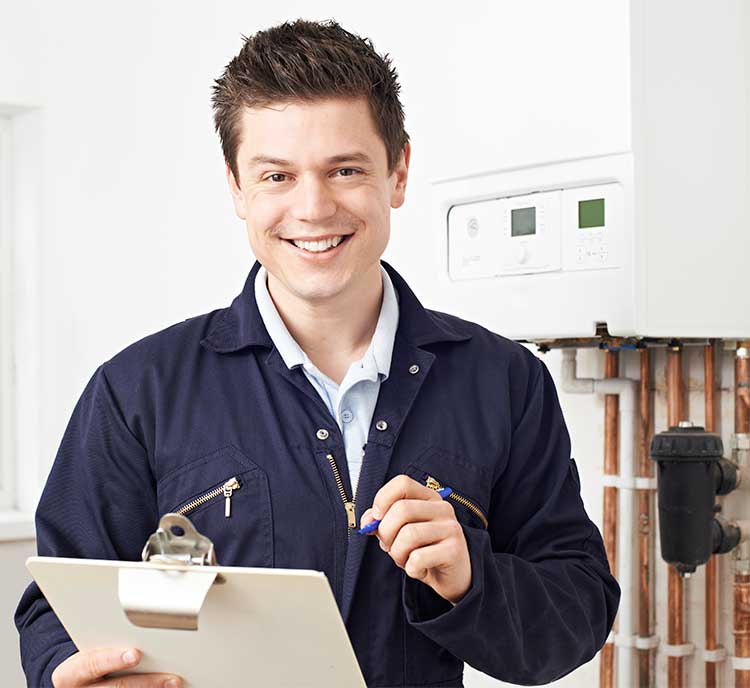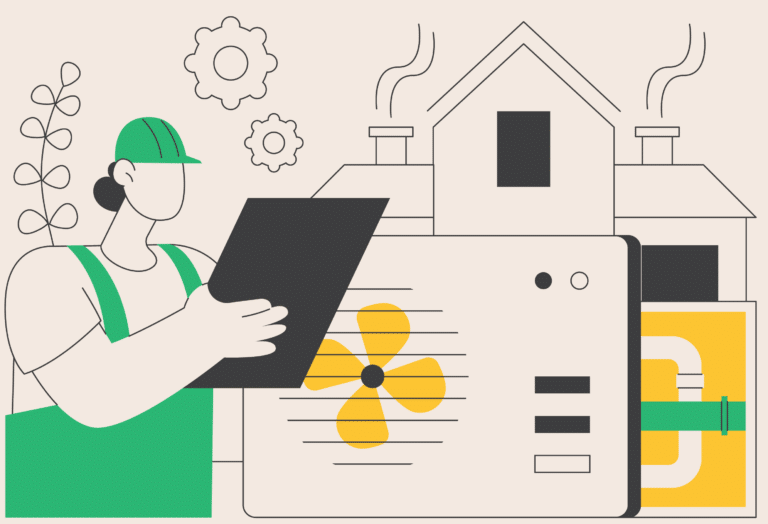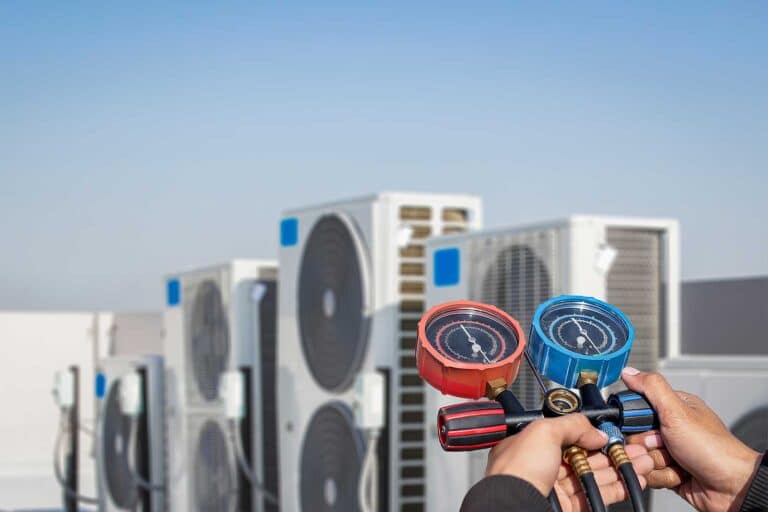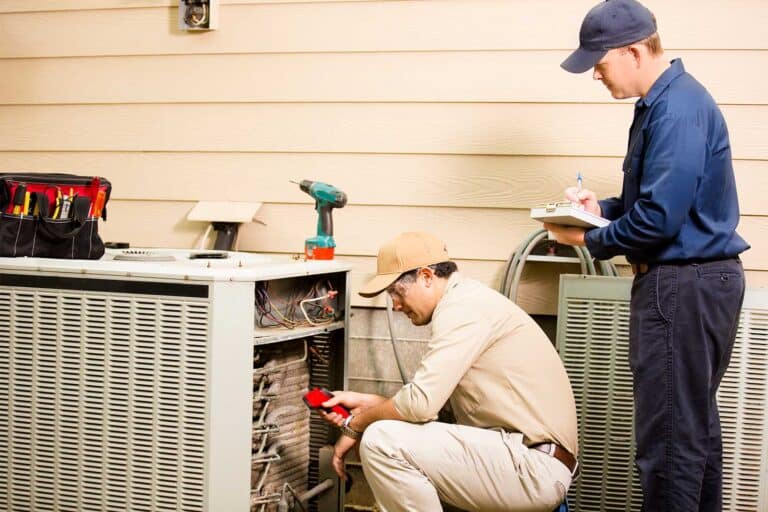No Heat in My House: Check This Before Calling Us
When you wake up to a freezing house, panic sets in fast. You check the thermostat, the vents, maybe even the circuit breaker—but nothing changes. If you’re saying, “There’s no heat in my house,” don’t worry. There are several things you can check before calling for professional furnace repair.
At Blue Valley Heating & Cooling, we know how stressful heating problems can be, especially during a Colorado winter. This guide explains common causes, troubleshooting tips, and when it’s time to call an expert.
Common Reasons There’s No Heat in Your House
Before assuming the worst, rule out some of the most frequent (and fixable) reasons your furnace may not be heating properly.
1. Thermostat Issues
If your furnace isn’t producing heat, the thermostat is the first thing to check. Make sure it’s set to HEAT and that the temperature is higher than your home’s current reading. Dead batteries are another common culprit—replace them and wait a few minutes to see if the system kicks on.
If you have a smart thermostat, verify that it’s connected to Wi-Fi and communicating with your HVAC system.
2. Tripped Circuit Breaker
Sometimes, the furnace simply doesn’t have power. Go to your electrical panel and check if the furnace breaker has tripped. If so, reset it once. If it trips again, there may be an electrical issue requiring professional service.
3. Dirty or Clogged Air Filter
A clogged filter restricts airflow, forcing your system to work harder and sometimes shut down entirely to prevent overheating. Replace or clean your filter if it looks dusty or dark. You can also review our air conditioning maintenance tips for general HVAC upkeep.
4. Furnace Switch Turned Off
Many homeowners don’t realize there’s a dedicated power switch located near the furnace, often resembling a light switch. Make sure it’s flipped to the ON position.
5. Pilot Light or Ignition Problems
Older furnaces rely on a pilot light, while modern models use an electronic ignition system. If your pilot light is out, follow manufacturer instructions for relighting it. For newer systems, check for an ignition fault code—this may signal a bad sensor or ignition control board.
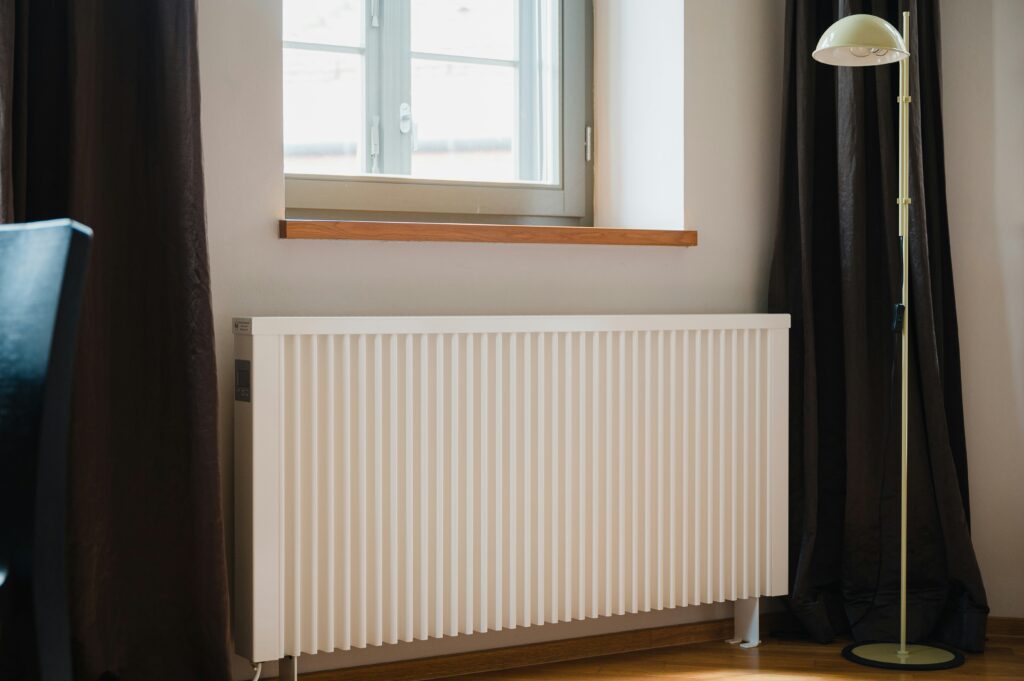
Simple Troubleshooting Steps Before Calling a Pro
If basic checks don’t solve the problem, try these next-level DIY steps to narrow down what’s wrong.
1. Check the Furnace Filter and Vents
Even if you’ve recently replaced your filter, double-check. Also inspect vents throughout the home to ensure they’re not blocked by furniture, curtains, or debris.
2. Inspect the Furnace Door and Safety Switch
Modern furnaces include a safety switch that prevents operation when the door is removed. Make sure the panel is securely closed.
3. Listen for Unusual Sounds
If your furnace clicks but doesn’t ignite, the ignition system may be the issue. If you hear humming or rattling, a motor or blower problem could be to blame. Document the noise—it helps your technician diagnose the problem faster.
4. Reset the Furnace
Some systems have a reset button near the blower motor. Press it once to see if the furnace restarts. Avoid pressing it repeatedly, as this could damage the unit.
5. Look at the Furnace Error Code Light
Many newer furnaces flash error codes using an LED light. Check the manual or manufacturer website to interpret what the code means.
When to Call for Professional Furnace Repair
If you’ve tried the above steps and still have no heat, it’s time to contact a licensed HVAC technician. Blue Valley Heating & Cooling provides fast, reliable furnace repair across Colorado, including Longmont, Boulder, and Centennial.
Signs You Need Professional Help
- Frequent cycling between on and off modes
- Burning smells or unusual noises
- Cold air coming from vents even when the furnace runs
- No power to the system despite resetting the breaker
- Visible leaks or moisture near the furnace
Prompt professional repair prevents further damage and restores safe, efficient operation.
Common Furnace Problems That Cause Heat Loss
Understanding what might be wrong can help you explain symptoms to your technician.
1. Faulty Thermostat Sensors
If the thermostat sensor malfunctions, it may send incorrect temperature readings to your system, causing it to shut off too soon.
2. Blower Motor Failure
A failing blower motor can prevent heated air from circulating through your vents, even if the furnace itself is generating heat.
3. Ignition System Malfunctions
Ignition problems can prevent the burners from lighting. This often requires professional replacement of the ignition module or flame sensor.
4. Gas Supply or Valve Issues
If your furnace runs on natural gas, a closed or partially blocked gas valve can stop the system from heating. Always let a certified technician handle gas-related problems.
5. Overheating from Restricted Airflow
If airflow is restricted by a clogged filter or blocked ductwork, the system can overheat and shut down automatically as a safety measure.
Maintenance Tips to Prevent Future Heating Problems
The best way to avoid losing heat in your home is through regular maintenance. Preventative service keeps your system efficient and dependable.
Annual Professional Inspection
Schedule annual inspections with trusted technicians. During maintenance, experts clean internal parts, test safety components, and verify gas pressures.
Replace Filters Regularly
Swap your air filter every 1–3 months during heating season. This simple step extends the life of your system and improves indoor air quality.
Check Carbon Monoxide Detectors
Always test CO detectors during heating season. A malfunctioning furnace can release carbon monoxide, a serious health risk.
Keep Vents and Registers Clear
Ensure that furniture or rugs don’t block airflow from your supply vents.
Learn more about seasonal HVAC care in our air conditioning repair and air conditioning installation guides.
Energy Efficiency and Cost Savings
Heating inefficiency is one of the main reasons homeowners experience poor comfort and rising bills. According to Energy.gov, maintaining your HVAC system can lower energy costs by 10% to 30% annually.
A clean, serviced furnace runs smoother, uses less energy, and keeps your home at a consistent temperature. If your unit is over 15 years old, consider a professional assessment to decide whether repair or replacement makes more financial sense.
Signs You May Need a Furnace Replacement
Even the best systems eventually wear out. Here are some signs your furnace might be near the end of its lifespan:
- The furnace is 15–20 years old or older
- Frequent repair calls within a single year
- Noticeable increase in energy bills
- Uneven heating throughout the home
- Strange noises or smells
Replacing an aging unit with a high-efficiency model can cut energy costs and improve indoor air quality. For guidance on system upgrades, our team can provide detailed cost comparisons and installation options.
Indoor Comfort and Moisture Concerns
If your home feels damp or cold even when the thermostat reads correctly, you may have humidity or insulation issues. Homes & Gardens explains that poor ventilation or air leaks can make heating feel ineffective. During your furnace inspection, our technicians can help identify and address these comfort problems.
Frequently Asked Questions (FAQ)
Why is there no heat in my house even though the furnace is running?
This usually points to an airflow issue—a dirty filter, blocked vents, or blower failure. Check for blockages and replace your filter. If warm air still doesn’t circulate, the blower motor or control board may need repair.
How often should my furnace be serviced?
At least once per year, preferably before winter begins. Regular service keeps components clean, detects early problems, and maintains efficiency.
What should I do if my pilot light keeps going out?
This could indicate a faulty thermocouple, dirty flame sensor, or gas pressure issue. Avoid DIY fixes involving gas—contact a licensed HVAC technician.
Can a dirty filter really stop my furnace from heating?
Yes. A clogged filter can cause overheating, forcing the system to shut down for safety. Replace filters regularly to prevent shutdowns.
How long should a furnace last?
With consistent maintenance, most furnaces last 15–20 years. Efficiency and reliability drop significantly after that point, making replacement more economical.
Keynotes
- Replacing your air filter every 1–3 months can reduce furnace failures by 40%.
- Annual maintenance can extend furnace life by up to 10 years.
- Proper thermostat calibration can improve heating efficiency by 5–10%.
